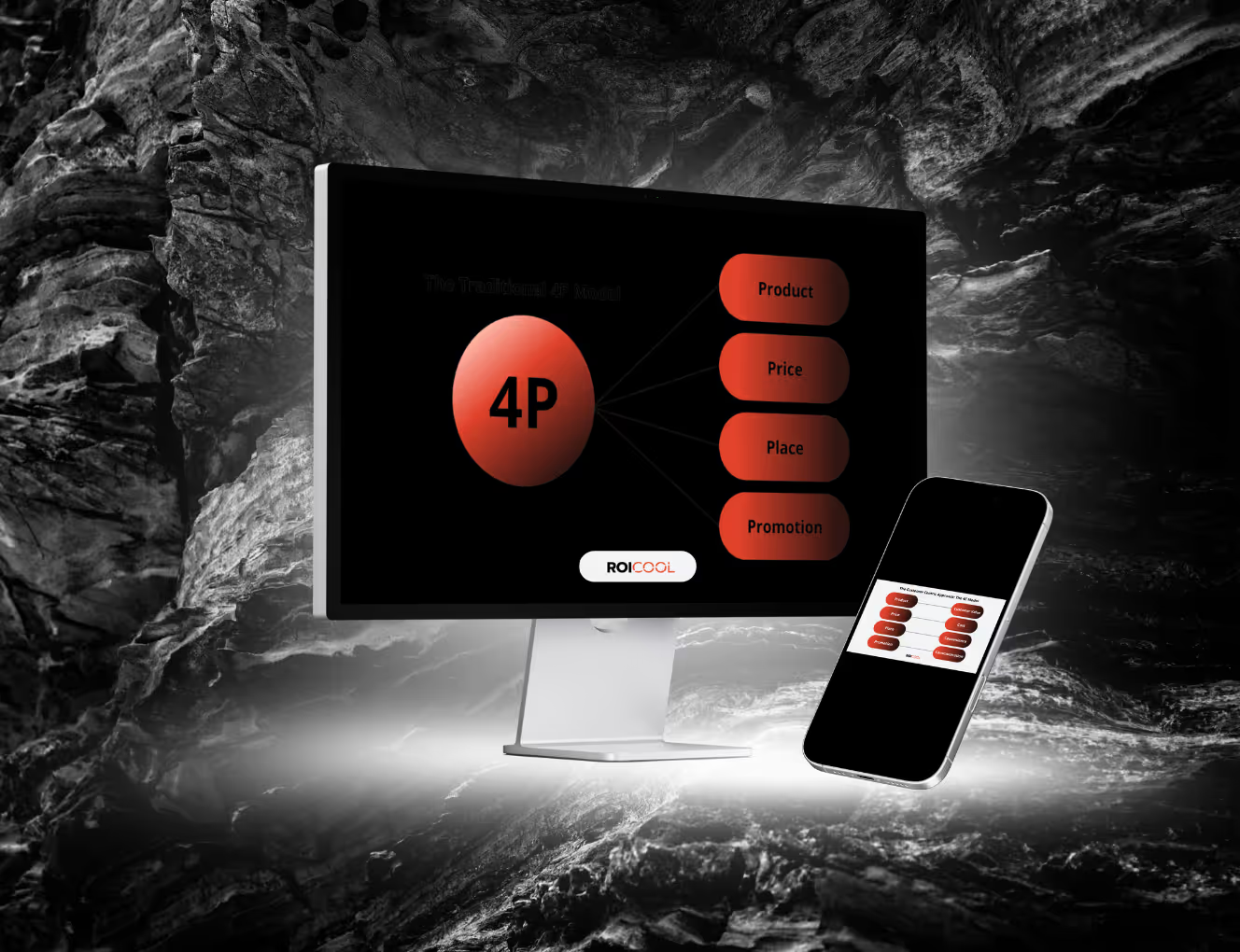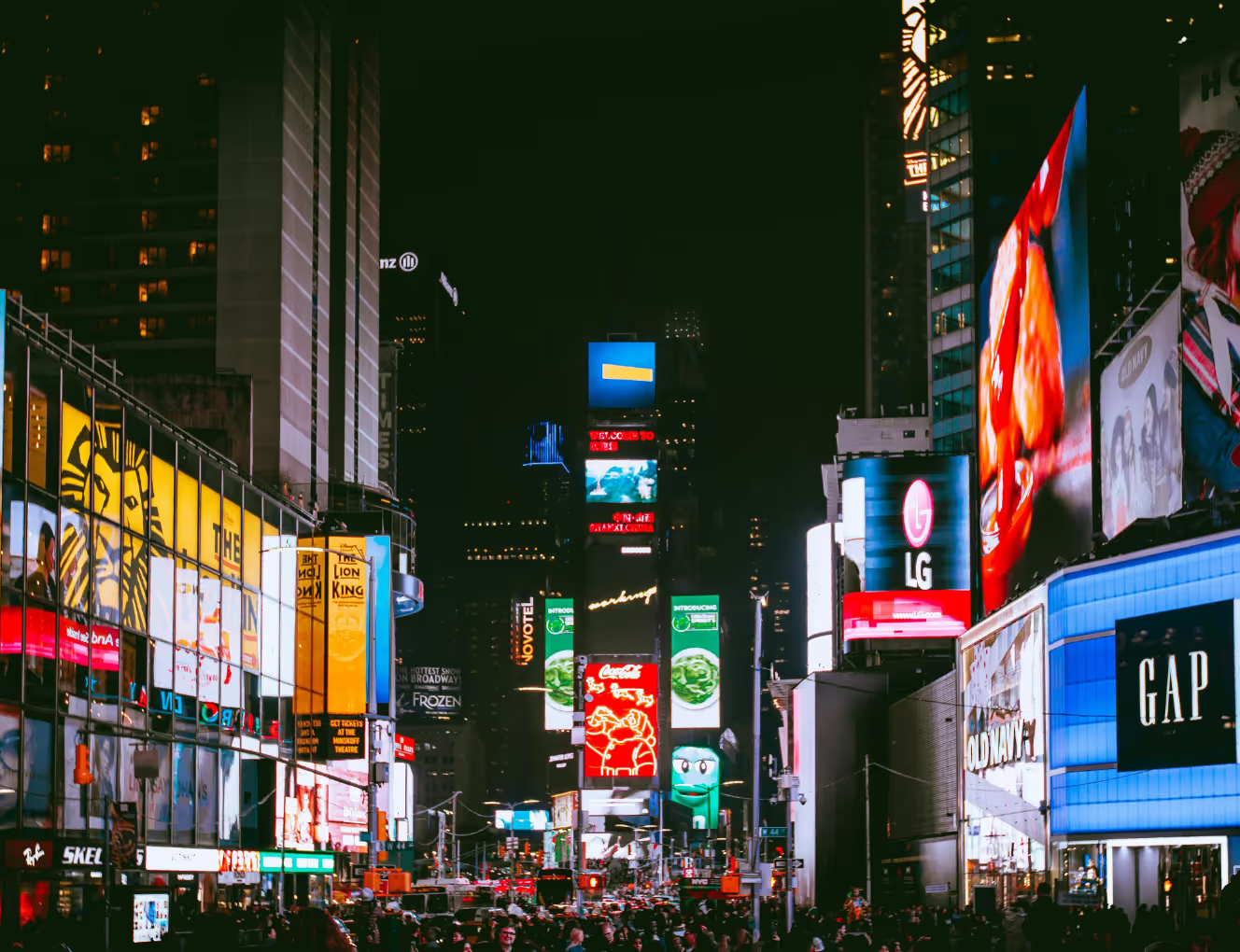If you want your business to stand out in the digital world and significantly increase its sales, digital advertising is no longer an option—it's a necessity. In this comprehensive guide, you'll discover what digital advertising is, the countless benefits it offers your business, and a step-by-step guide to creating a successful digital advertising strategy.In this in-depth guide, we'll cover every aspect of digital advertising, from its fundamental principles to the most complex strategies. Our goal is not just to tell you what digital advertising is, but to provide you with practical knowledge on how to leverage this powerful tool for your own benefit.
What is Digital Advertising?
In its simplest form, digital advertising is the promotion of a product, service, or brand through the internet and other digital communication channels. Unlike traditional advertising (TV, radio, newspapers, etc.), digital advertising offers the ability to engage in two-way communication with the target audience and measure campaign results in real-time.This modern marketing approach aims to reach potential customers by using websites, social media platforms, search engines, email, mobile apps, and other digital channels. The primary goal is to deliver the right message to the right person at the right time to increase brand awareness, acquire leads, and ultimately boost sales.
Core Concepts of Digital Advertising
Before stepping into the world of digital advertising, it's useful to know some of the key terms you'll frequently encounter:
- CPC (Cost Per Click): The fee you pay each time your ad is clicked.
- CPM (Cost Per Mille): The cost you pay for your ad to be displayed one thousand times.
- CTR (Click-Through Rate): A metric that shows the percentage of people who clicked on your ad after seeing it. A high CTR indicates your ad is engaging.
- ROAS (Return on Ad Spend): One of the most important metrics, showing how much revenue you earn from your ad spending.
- Conversion: The desired action a user takes as a result of your ad (e.g., making a purchase, filling out a form, or subscribing to a newsletter).
Why Digital Advertising? What Are Its Benefits?
The countless advantages of digital advertising over traditional methods make it indispensable for today's businesses:
- Precise Audience Targeting: Digital advertising allows you to target users based on criteria such as demographics, interests, geographic location, and even past online behavior. This ensures your ads are only shown to people who are genuinely likely to be interested in your product or service.
- Cost-Effectiveness: You can create campaigns with much more flexible budgets compared to traditional advertising. This is a huge advantage, especially for small and medium-sized businesses.
- Measurability and Analytics: You can track the performance of your digital ad campaigns in real-time, clearly seeing which ads are working best, how much you're spending, and what your return on investment is. This data allows you to continuously optimize your strategies.
- Broad Reach: Thanks to the global nature of the internet, you can reach potential customers around the world without geographical limitations.
- Flexibility and Speed: Digital ad campaigns can be launched, paused, or adjusted very quickly. You can respond instantly to market changes or competitor actions.
Defining Your Strategy: The Role of Traditional vs. Digital Advertising
We've seen the unique advantages of digital advertising, such as targeting, measurability, and cost-effectiveness. But does this mean traditional advertising (TV, radio, newspapers) is completely obsolete? Successful brands often achieve the best results by building integrated strategies that combine the power of both worlds. A deeper understanding of the fundamental philosophy of advertising, its impact on consumer psychology, and how traditional and digital channels can work together in your strategy will give you a holistic perspective on marketing. Our comprehensive guide titled "What is Advertising?" will guide you in seeing this bigger picture.
The Most Common Types of Digital Advertising: Campaign Models for Your Brand
Digital advertising offers endless ways to reach your target audience. Choosing the right type is essential for maximizing your return on investment. Here are the most common and effective digital advertising types businesses use:
Search Engine Marketing (SEM) - Be in the Right Place at the Right Time
Your customers know exactly what they need when they search for a product or service. Search Engine Marketing (SEM) allows you to capture this "purchase intent" moment. Thanks to platforms like Google Ads, your ad instantly appears when potential customers search for specific keywords. This method is the most effective way to reach users at the bottom of the sales funnel, right when they are most ready to take action.Working with an expert on your SEM campaigns can help you reduce your ad costs and target the right audience. You can contact a Google Ads agency to get support on building the right ad campaign structure.
Social Media Advertising - Build a Personal Connection with Your Audience
Social media platforms like Facebook, Instagram, LinkedIn, and TikTok are the most powerful tools for telling your brand's story to the right audience. Social media ads offer incredibly detailed targeting options based on user demographics, interests, and behaviors. This ensures your ad appears organically in the feeds, stories, or videos of people who are genuinely likely to be interested in your product.You can learn more about social media advertising by checking out our "Instagram Advertising Guide".
Display Ads - Stay in Their Visual Memory
The colorful banners and images you see on websites, news portals, or mobile apps are known as display ads. Their purpose is to reach a broad audience that hasn't made a search yet and may not even realize they need your product. With massive networks like the Google Display Network (GDN), your ad can be shown on thousands of different sites, rapidly increasing your brand awareness.
Video Ads - Harness the Power of Storytelling
People tend to remember content that they engage with visually. Video ads, which are shown on platforms like YouTube, TikTok, or other websites, offer a unique potential for telling your brand's story, showcasing product benefits, and creating an emotional connection. When your ad appears while users are watching a video, your message is delivered directly to their attention.
Native Advertising - Make Yourself Feel at HomeNative (natural) advertising
Consists of ads that blend seamlessly with the format and content of the platform they appear on, without disrupting the user experience. Presented with labels like "sponsored content" or "recommended article," these ads promote your brand without interrupting the user's flow. This is a less intrusive, more trustworthy method that integrates advertising with the content.
Email Marketing - Build Customer Loyalty
As one of the most powerful steps in the sales funnel, email marketing allows you to reach your existing customers or potential subscribers directly. By informing them about new products, campaigns, or special discounts, you build customer loyalty and re-engage your existing audience.
Popular Tools for Email Marketing
A successful email marketing strategy requires using the right tools. These tools enable you to manage your lists, set up automated campaigns, and analyze your mailings.
- Mailchimp: An easy-to-use platform, ideal for beginners and small businesses.
- Brevo: A comprehensive marketing automation tool that combines different channels like email, SMS, and chat.
- HubSpot: An all-in-one platform that includes email marketing as well as CRM (Customer Relationship Management) and sales tools.
Influencer Marketing - Grow with Trust and Social Proof
Being recommended by a person your target audience trusts is one of the most effective forms of advertising. Influencer marketing is a collaboration where individuals with a specific following and influence on social media (influencers) promote your brand or products to their followers. This allows you to present your ad in a more authentic and trustworthy way, building confidence within your target audience.
How to Create a Successful Digital Advertising Strategy
An effective digital advertising campaign requires a well-planned strategy. Here are the steps to building a successful strategy:
- Define Your Goals (SMART Goals): What do you want to achieve? Is it increasing brand awareness, driving more traffic to your website, collecting leads, or boosting direct sales? Your goals should be Specific, Measurable, Achievable, Relevant, and Time-bound.
- Define Your Target Audience: Who are you going to show your ads to? Analyze their demographics, interests, online habits, which platforms they spend time on, and what kind of content they enjoy. Creating "Buyer Personas" will help you in this process.
- Choose the Right Channels: Which digital channels are your target audience most active on? Focus your strategy on those channels. While TikTok and Instagram might be effective for reaching a young audience, LinkedIn might be a better choice for professionals.
- Plan Your Budget: Determine how much you will spend on your ad campaign. Plan your budget based on models like cost-per-click (CPC) or cost-per-mille (CPM), and consistently track your return on ad spend (ROAS).
- Create Engaging and Valuable Content: Your ad copy, images, and videos should be designed to capture your audience's attention, offer them value, and prompt them to take action.To build your digital marketing strategy step-by-step, you can check out our detailed 2025 Digital Marketing Strategy Guide.
Performance Measurement and Optimization in Digital Advertising
One of the greatest beauties of digital advertising is that every step is measurable. To measure the success of your campaigns and continuously improve, you should regularly track the following metrics:
- Click-Through Rate (CTR)
- Conversion Rate
- Cost Per Click (CPC)
- Customer Acquisition Cost (CAC)
- Return on Ad Spend (ROAS)By analyzing this data, you can pause underperforming ads, redirect your budget to channels and ads that bring the best results, and continuously optimize by conducting A/B tests on your ad copy or targeting.
The Most Common Mistakes in Digital Advertising and How to Avoid Them
To create a successful digital ad campaign, it's not enough to just know the right strategies; you also need to avoid common pitfalls.
- Incorrect Target Audience Definition: When you don't show your ads to the right people, your budget goes to waste. Be sure to analyze your target audience's demographics, interests, and online behavior in detail.
- Insufficient Conversion Tracking: Accurately measuring the return on your campaigns (ROAS) is vital to understanding which ads are working. Make sure to set up conversion tracking with tools like Google Analytics.
- Poorly Designed Ad Creatives: If your ad copy and visuals aren't engaging and clear, users won't take action, no matter how good your targeting is. Ensure your copy includes strong calls-to-action (CTAs)."People don't care about your product or service. They care about themselves. The key to successful advertising is not what you're offering, but what your target audience wants."— Seth Godin, American author and marketing expert.
The Future of Digital Advertising
Digital advertising is a field that is constantly evolving with technological advancements. Here are some key trends that await us in the future:
- Artificial Intelligence (AI) and Automation: AI will make targeting, bidding strategies, and ad optimization processes smarter and more efficient.
- Programmatic Advertising: The automated, real-time buying and selling of ad space will increase advertising efficiency.
- The Rise of Video Ads: The importance of short, interactive video content will grow, especially on mobile devices.
- Voice Search and Voice Ads: With the spread of smart assistants, optimizing for voice searches and new voice ad formats will emerge as a new field.
- Data Privacy and Transparency: The increasing sensitivity of users about data privacy will drive brands to develop more transparent and trust-based marketing strategies.
Conclusion
Digital advertising is no longer an option but a necessity for brands. When implemented with the right strategies, it offers incredible opportunities for your business to grow, reach new customers, and stand out from the competition. The core concepts, types, and strategies we've covered in this guide will help you take a solid step into the world of digital advertising. Remember, the digital world is constantly changing; therefore, the key to success is to continuously learn, test, and optimize your strategies. To create your digital advertising strategy, contact us. Let's plan the future of your brand together with a free analysis meeting.










